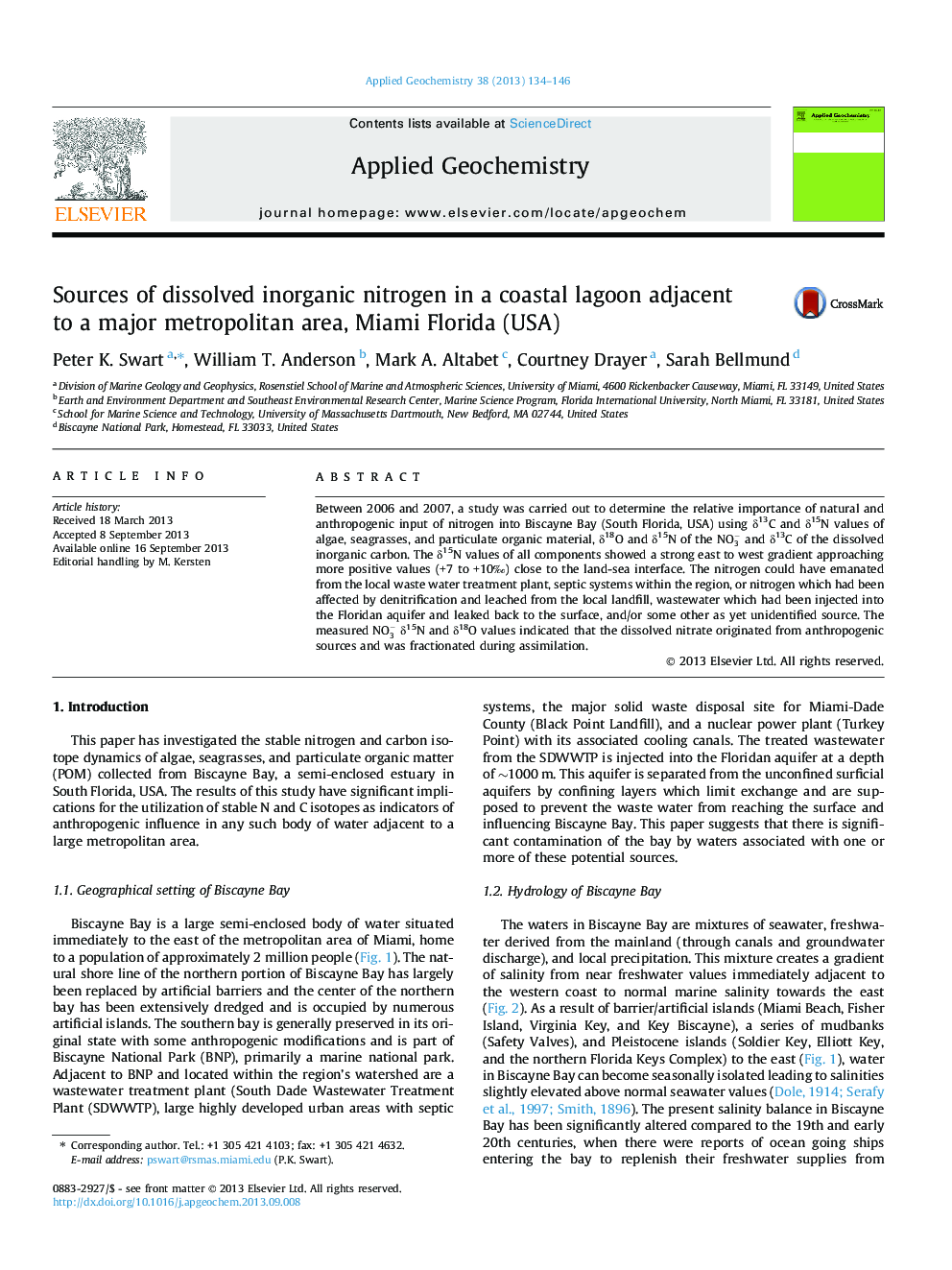| Article ID | Journal | Published Year | Pages | File Type |
|---|---|---|---|---|
| 4435914 | Applied Geochemistry | 2013 | 13 Pages |
Abstract
Between 2006 and 2007, a study was carried out to determine the relative importance of natural and anthropogenic input of nitrogen into Biscayne Bay (South Florida, USA) using δ13C and δ15N values of algae, seagrasses, and particulate organic material, δ18O and δ15N of the NO3- and δ13C of the dissolved inorganic carbon. The δ15N values of all components showed a strong east to west gradient approaching more positive values (+7 to +10â°) close to the land-sea interface. The nitrogen could have emanated from the local waste water treatment plant, septic systems within the region, or nitrogen which had been affected by denitrification and leached from the local landfill, wastewater which had been injected into the Floridan aquifer and leaked back to the surface, and/or some other as yet unidentified source. The measured NO3- δ15N and δ18O values indicated that the dissolved nitrate originated from anthropogenic sources and was fractionated during assimilation.
Related Topics
Physical Sciences and Engineering
Earth and Planetary Sciences
Geochemistry and Petrology
Authors
Peter K. Swart, William T. Anderson, Mark A. Altabet, Courtney Drayer, Sarah Bellmund,
